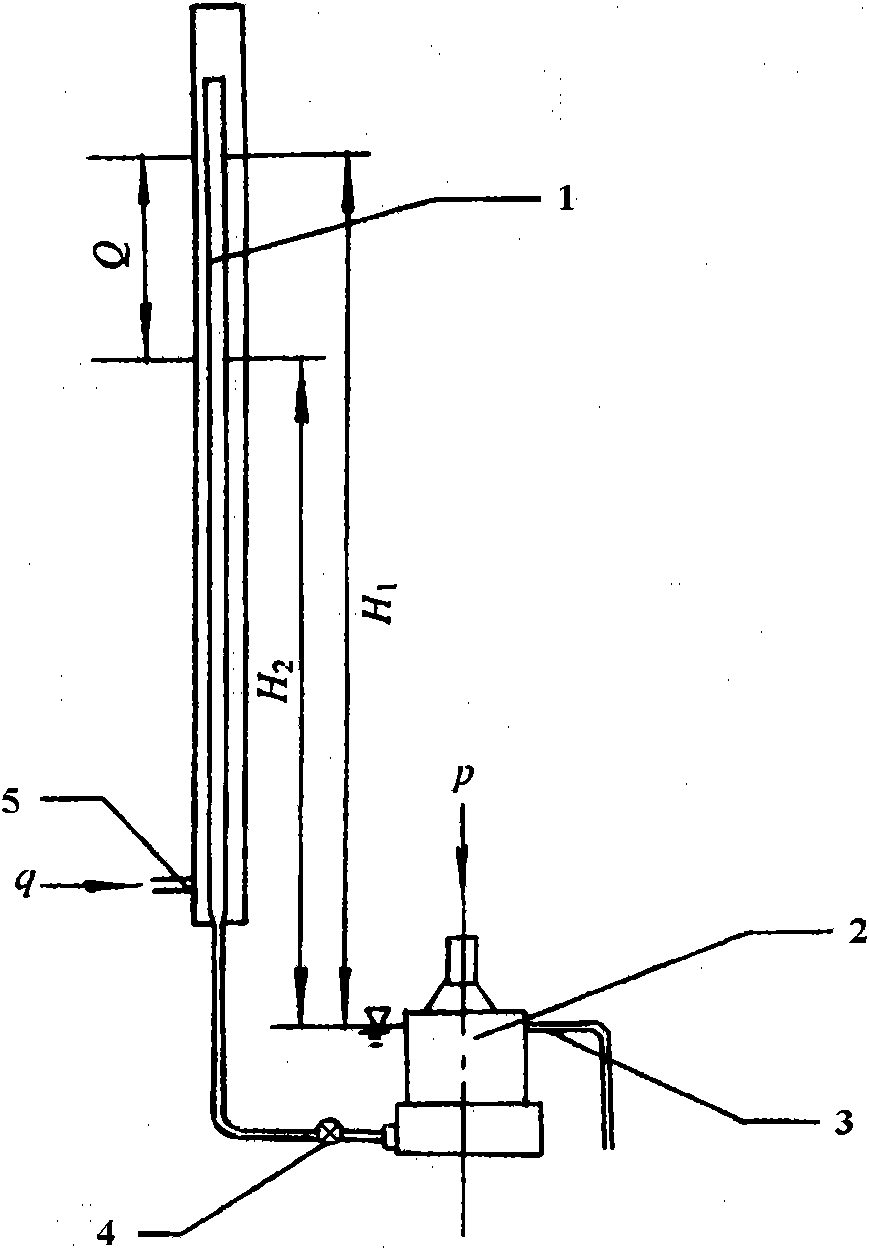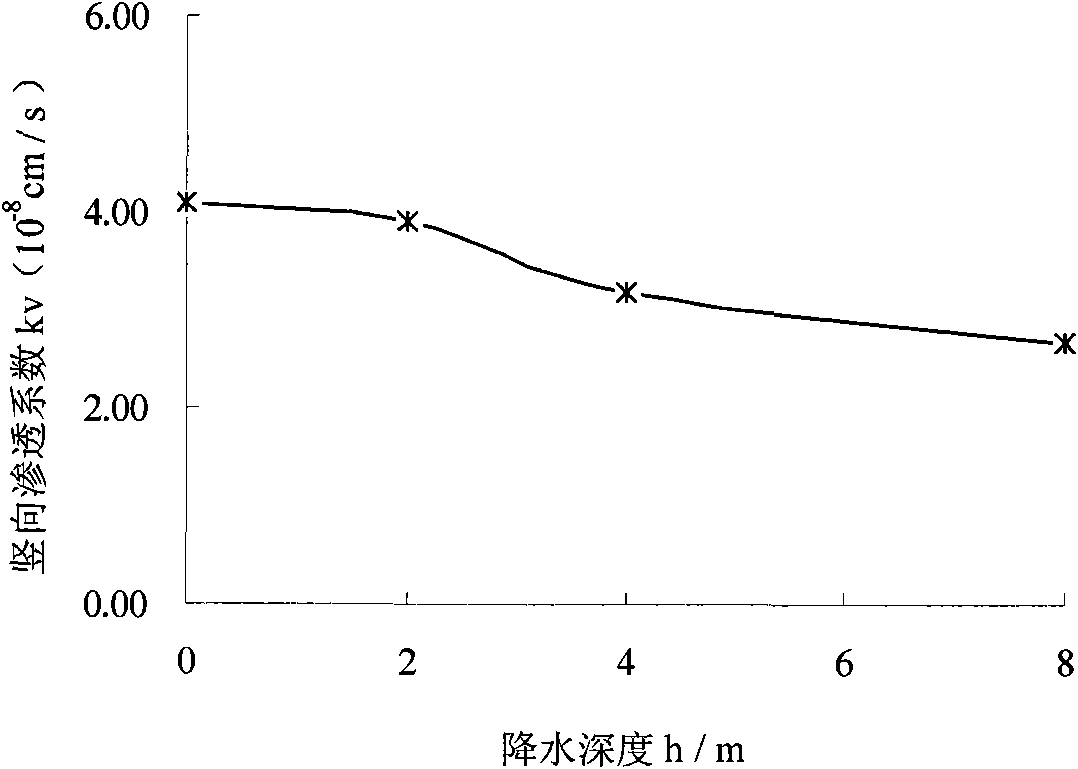Test method for simulating variation of permeability coefficient of foundation pit precipitation soil
A technology of permeability coefficient and test method, which is applied in the field of simulating the change of the permeability coefficient of the foundation pit dewatering soil in the soft soil layer, can solve the problems of not considering the influence of the permeability coefficient of the foundation pit dewatering soil and the unreasonable results.
- Summary
- Abstract
- Description
- Claims
- Application Information
AI Technical Summary
Problems solved by technology
Method used
Image
Examples
Embodiment 1
[0026] Specific steps are as follows:
[0027] (1) Cut the undisturbed soil sample with a soil cutting ring knife with an inner diameter of 61.8mm and a height of 20mm, and paste filter paper at both ends of the sample;
[0028] (2) Connect the osmotic pressure container with the seepage flow pipeline and the seepage flow metering tube, let the water in the metering tube flow into the osmotic pressure container, so that the permeable stone in the entire pipeline and the osmotic pressure container is fully exhausted and saturated, and then close the valve;
[0029] (3) Put the ring knife with the soil sample up into the osmotic pressure container; put an O-shaped water stop ring on the outside of the ring knife, put a directional gasket, and screw on the compression screw; Install the permeable stone and the pressure transmission piston;
[0030] (4) The sample is consolidated in two stages through the pressure regulating valve. The first consolidation restores the sample to t...
Embodiment 2
[0035] The sample is the undisturbed soil taken from a deep foundation pit in the urban area of Shanghai. The sample soil is gray muddy clay of layer ④, with a buried depth of 9.5-17.5m and a weight of 16.7kN / m 3 , the average self-weight stress is 100.0kPa. The test simulated four working conditions of no precipitation and 2.0m, 4.0m, and 8m of precipitation, and the corresponding consolidation pressures were 100.0kPa, 120.0kPa, 140.0kPa, and 180.0kPa; The samples were consolidated in two stages; a total of 4 groups of tests were done. Table 1 shows the vertical permeability coefficient of gray silty clay soil in layer ④ before and after precipitation measured according to the above test procedures. The variation curve of vertical permeability coefficient of layer ④ gray silty clay with precipitation depth is shown in image 3 shown.
Embodiment 3
[0037] The sample is the undisturbed soil taken from a deep foundation pit in the urban area of Shanghai. The sample soil is ⑤-1 layer of gray clay, with a buried depth of 17.5-22.0m and a weight of 17.5kN / m 3 , the average self-weight stress is 150.0kPa. The test simulated four working conditions of no precipitation and 2.0m, 4.0m, and 8.0m of precipitation, and the corresponding consolidation pressures were 150.0kPa, 170.0kPa, 190.0kPa, and 230.0kPa; The precipitation samples were consolidated in two stages; a total of 4 groups of tests were done. Table 1 shows the vertical permeability coefficient of the gray clay layer ⑤-1 before and after precipitation measured according to the above test procedures. ⑤ The variation curve of the vertical permeability coefficient of the gray clay layer ⑤-1 with the precipitation depth is shown in Figure 4 shown.
PUM
 Login to View More
Login to View More Abstract
Description
Claims
Application Information
 Login to View More
Login to View More - R&D
- Intellectual Property
- Life Sciences
- Materials
- Tech Scout
- Unparalleled Data Quality
- Higher Quality Content
- 60% Fewer Hallucinations
Browse by: Latest US Patents, China's latest patents, Technical Efficacy Thesaurus, Application Domain, Technology Topic, Popular Technical Reports.
© 2025 PatSnap. All rights reserved.Legal|Privacy policy|Modern Slavery Act Transparency Statement|Sitemap|About US| Contact US: help@patsnap.com



